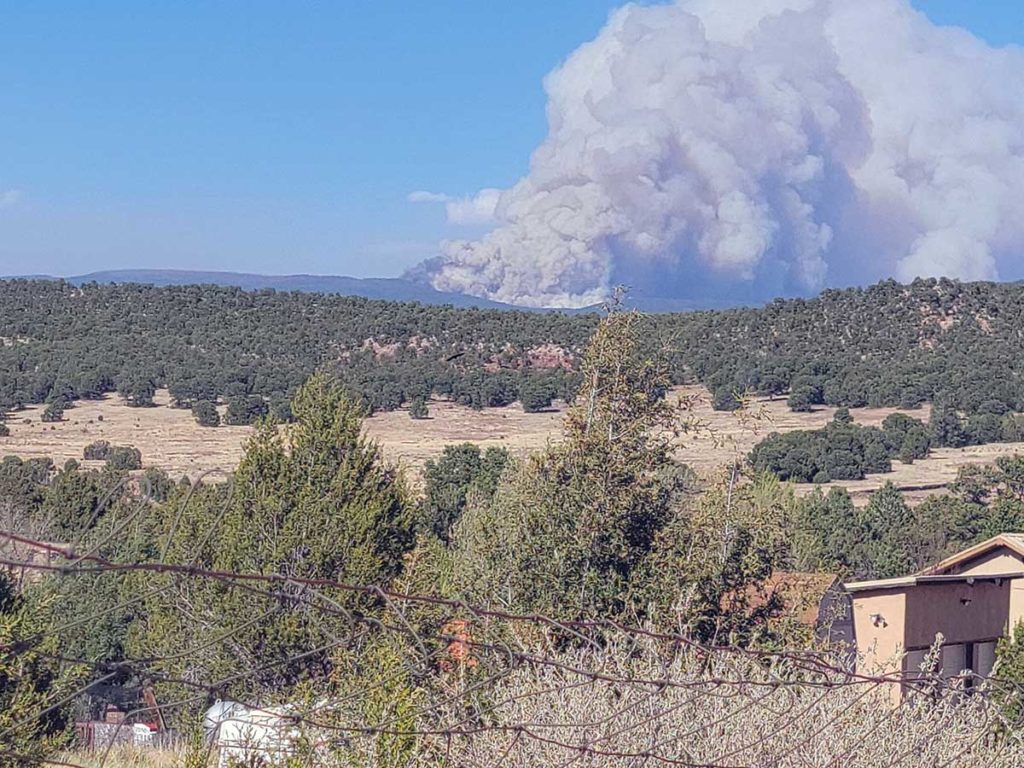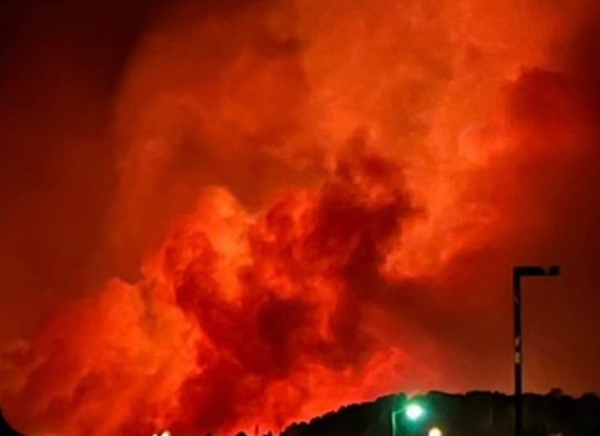
Updated: May 17, 12 p.m.
New Mexico is in the midst of its worst wildfire season in generations, with backcountry blazes roaring through populated areas, ravaging infrastructure and destroying the homes and businesses of electric cooperative members.
“Drought conditions combined with the heavy winds we’ve been experiencing allowed two large fires to combine, and that’s allowed them to move rapidly toward some of our communities,” said Les Montoya, CEO and general manager of Mora-San Miguel Electric Cooperative.
“At least 3,600 members on our 11,000-meter system have been impacted by outages,” Montoya said on May 12. “There’ve been houses and business destroyed, and portions of our distribution system have burned.”
The co-op has suspended most operations at its Mora, New Mexico, headquarters and shifted staff to its Pecos district offices, 77 miles to the southwest.

“That’s limited and hindered us on being able to deal with our consumers on a daily basis and deal with their concerns as well,” said Montoya, adding that a limited number of staff have been allowed to pass through fire lines to perform essential duties in Mora.
The Hermits Peak Fire began with spot fires ignited under a prescribed burn to reduce dried vegetation on April 6. The cause of the Calf Canyon Fire April 19 is still under investigation, but high winds driving embers from the original fire may have contributed to the second blaze. The two blazes have merged, and as of May 16 they had consumed more than 298,000 acres in Mora, San Miguel and Taos counties, were threatening Colfax County, and were 27% contained.
“Fire officials have told us that at least 400 structures have been damaged or destroyed,” said Montoya.
“For more than two weeks, one of our senior line technicians and I have been operating out of the incident command center to help provide information on our lines to the fire management team,” he added. “We’ve also been available to de-energize our lines for safety reasons when fire crews are working those areas.”
That relationship has allowed co-op personnel to access areas that have cooled down to conduct ground assessments, evaluate damage and examine options for restoring power. “Only 15% to 20% of the co-op’s affected territory has been accessible,” Montoya said.
Portions of the service territory of Espanola-based Jemez Mountains Electric Cooperative to the southwest of Mora San Miguel EC have also been impacted by wildfires. The Cerro Pelado Fire, which has charred over 45,000 acres since April 22, is 62% contained. More than 1,000 firefighters were working in the area, but co-op officials were unclear when they would be able to complete damage surveys and make repairs.
“We have restrictions we have to abide by from the Forest Service, and our line crews have to take extraordinary precautions, especially during power outage restoration,” said Carmen Campbell, manager of Jemez Mountain EC’s Cuba District. “We have our tree trimmers and vegetation management crews in the area to handle trees within our rights of way in the Jemez Springs District, where the Cerro Pelado Fire started in our territory.”
Campbell added that the co-op’s line technicians have also been available to de-energize lines near or along fire lines and take other measures to reduce risks to firefighters.
While the extent of damage to co-op lines and other utility assets may not be fully determined until the fires are controlled and ground and air surveys are conducted, co-op officials have expressed concern for their members’ losses.
“Homesteads have been damaged and, up in the mountains, there are a lot of summer homes, hunting cabins with very few full-time residents where the fire has burned so far,” said Campbell. “Firefighters were successful getting the blaze 11% contained in the Sierra de los Pinos and the Valles Caldera National Preserve area on May 11. That was really fortunate because that would’ve run into hundreds of homes there where people live year-round.”
But some subdivisions and small communities served by co-ops have been gutted by the flames.
“San Miguel and Mora counties are two of the most impoverished counties not only in the state, but in the nation,” said Keven Groenewold, CEO and general manager of the New Mexico Rural Electric Cooperative Association. “Many of the rural homes were handed down through generations and, quite frankly, there’s probably a whole lot of them that weren’t insured.”
The statewide association has been assisting impacted co-ops with locating vendors and contractors who can help with ground and drone damage assessments, restoration supplies and any sustained rebuilding projects that may be necessary.
“The president has issued a federal disaster declaration, so we’re working to turn around FEMA applications quickly,” said Groenewald. “We’ve got to find a qualified vendor to conduct the required damage assessments because the co-ops don’t have those resources. As we learn more about actual damage to poles, lines and other assets, we may need to reach out to the co-op network to address supply chain issues.”
Derrill Holly is a staff writer for NRECA.